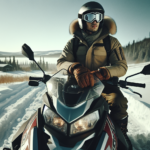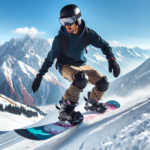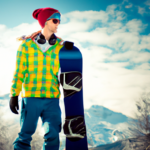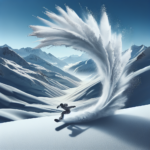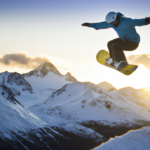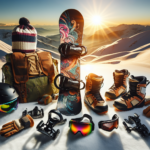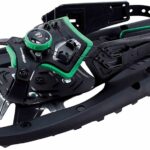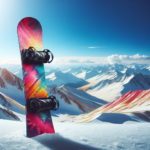Aside from the adrenaline rush and snowy vistas, snowboarding has one unique challenge — staying warm! The name of the game is balance; you need to stay toasty without overheating and sweating. Let’s unlock a few key tricks to maintain that perfect equilibrium, ensuring you can enjoy shredding down the mountains all day without succumbing to the bone-chilling cold. This article will equip you with practical survival tips and dynamic layering methods for a cozy snowboarding experience. The slopes are waiting, are you ready to conquer the cold?
Choosing the Right Clothing
When it comes to staying warm when snowboarding, few things are as crucial as choosing the right clothing. Trust me, stepping out into the snow in the wrong gear could turn your snowboarding adventure into a freezing nightmare. So, how do you choose the right clothing?
Knowing the Layers
The trick to dressing for snowboarding (or any cold-weather activity for that matter) is to dress in layers. You need at least three: the base layer, the midlayer, and the outer layer. The base layer’s job is to keep you dry by wicking away sweat. The midlayer provides insulation to keep you warm, and the outer layer protects you from wind and snow.
Selecting Material and Design
Not all materials are created equal when it comes to winter sports gear. Your base layer should be made of a material like merino wool or synthetic fabrics that have excellent wicking properties. The design of your mid and outer layers also matters. For these layers, you want materials that are breathable yet water and wind-resistant, and designs that are insulated but not bulky.
Importance of Fit
But the right material and design aren’t enough, your clothing also need to fit just right. Clothing that’s too tight could restrict your movement and make your snowboarding experience less enjoyable. On the other hand, clothing that’s too loose won’t keep you as warm as it should. Your snowboarding gear should be snug but not tight, allowing for mobility without sacrificing warmth and protection.
Helmet and Goggles Considerations
Your helmet and goggles aren’t just safety devices—they also contribute to your overall warmth.
Helmet Warmth and Ventilation
When choosing a helmet, consider both warmth and ventilation. Most snowboarding helmets come with insulation for warmth and vents that can be opened or closed as needed for ventilation. This combination will help keep your head warm without overheating, which can lead to sweating and discomfort.
Choosing the Right Goggles
The same principle applies to goggles. You want a pair that fits snugly against your face to protect your eyes from wind and snow, but that also has ventilation to prevent fogging. Goggle lenses also play a role in visibility, an essential component of safety on the slopes.
Interchanging Lenses Based on Weather Conditions
Speaking of lenses, some high-end goggles let you interchange lenses depending on the weather. Bright, sunny days call for darker lenses, while lighter lenses are better for cloudy or snowy conditions.
Hand Protection
Hands are highly susceptible to the cold, but they also need to be free to maneuver. Here’s how you can protect them:
Selecting the Right Gloves
Gloves are the go-to option for most snowboarders. When choosing gloves, look for a pair that is warm, waterproof, and breathable. And of course, they should fit well, providing enough dexterity to handle your bindings and other gear.
Considering Mittens
If you don’t mind sacrificing a bit of dexterity for more warmth, consider mittens. They keep your fingers together, which generates more heat.
Using Hand Warmers
For an extra layer of warmth, you can also use hand warmers, which are small packets that generate heat when you shake them. They can be placed inside your gloves or mittens and provide warmth for several hours.
Footwear for Snowboarding
Cold or wet feet on the slopes? No thanks! That’s why having the right footwear is crucial.
Choosing the Right Socks
Avoid cotton socks. They retain moisture and won’t keep your feet warm. Instead, go for wool or synthetic blends that wick moisture and provide insulation.
Ensuring Proper Boot Fit
Your boots are equally important. They should be snug but not tight. Boots that are too small can cut off circulation and make your feet cold. On the other hand, boots that are too large won’t insulate your feet correctly.
Utilizing Foot Warmers
Just like hand warmers, you can use foot warmers – thin inserts that fit inside your boots and provide hours of warmth.
Snowboarding Body Gear
Your body gear has a significant impact on how warm (or cold) you feel on the slopes.
Understanding the Role of Base Layers
Base layers function as your second skin. They wick sweat away from your skin, keeping you dry and warm. Choose a moisture-wicking material like wool or synthetic fibers, and make sure it’s snug, but comfortable.
The Importance of Insulating Mid Layers
The midlayers play a vital role in insulating your body and trapping warmth. Midlayers are typically made of fleece or synthetic materials that have excellent insulating properties. Remember, though, that the thickness of the mid layer should vary with the weather.
Choosing the Proper Outer Layer
Your outer layer is your shield against wind, snow, and moisture. When choosing an outer layer, priorities should include water and wind-resistance, while also being breathable, to allow sweat to evaporate.
Counteracting Cold Weather
Prolonged exposure to cold weather can really sap your energy and leave you feeling chilled. To counteract this, you need to be proactive.
Taking Regular Breaks
Getting cold? It may be time for a break. A short rest in a warm spot can do wonders for your body temperature. It allows your body to warm up, and you can use these breaks as an opportunity to check and adjust your clothing if needed.
Seeking Shelter During Extreme Cold
In extreme cold, don’t hesitate to seek shelter. Mountain weather can be unpredictable, and there’s no shame in hitting the lodge for a while if the conditions get too rough.
Fueling the Body with Warm Foods and Drinks
Stay warm from the inside out! Enjoy a warm meal or hot drinks like coffee, tea, or hot chocolate. These not only warm you up but also provide much-needed energy for your body to generate heat.
Hydration and Nutrition
No matter how cold it is, your body needs to stay hydrated and fueled.
Importance of Staying Hydrated
You might not feel thirsty in the cold, but your body can still get dehydrated, especially with the physical exertion of snowboarding. Make sure to drink lots of fluids throughout the day—but stick with water or sports drinks, as alcohol and caffeine can dehydrate you.
Eating Nutrient-Rich Foods
Just like a car needs fuel, your body needs nutrients to keep performing at its best. Focus on nutrient-rich foods, high in carbohydrates, protein, and good fats. A well-fed body tends to stay warmer.
Carrying Snacks for Extra Energy
Don’t forget to pack some convenient, portable snacks for that extra energy boost on the slopes! Nutrition bars, nuts, dried fruit, and jerky all make great options.
Staying Active on the Slopes
Even with all the right clothing and equipment, it’s vital to keep active to fight off the cold.
Regular Movement to Generate Heat
When you’re on the slopes, movement is your best friend. The more you move, the more heat your body generates. It helps to wiggle your fingers and toes from time to time to keep the blood moving and maintain warmth.
Quick Warm-up Exercises
Even simple exercises like jumping jacks, squats, or lunges can work wonders. Do a quick warm-up before hitting the slopes, and you’ll see how much of a difference it makes.
Avoiding Prolonged Periods of Inactivity
Prolonged inactivity while exposed to cold can rapidly decrease body temperature. So try to avoid standing or sitting around for too long. If you need a break, try to find a warm spot to rest.
Understanding Weather Conditions
Weather conditions on the mountain can change rapidly, which could affect your warmth level.
Checking the Forecast
Before you head out, always check the forecast. Knowing what kind of weather to expect can help you prepare appropriately and stay warm.
Understanding Wind Chill Factor
You should also understand the wind chill factor, which can make it feel way colder than the actual temperature. Dressing in wind-resistant layers and protecting exposed skin can help counteract this.
Adapting to Changing Conditions
Be prepared for changing conditions. As they say: there’s no such thing as bad weather, only inappropriate clothing. If the weather changes, you may need to adjust your layers and protection.
Learning from Professional Snowboarders
Pro snowboarders spend countless hours on the slopes and have essential insights from their real-life experiences that can be invaluable in helping you stay warm.
Studying Their Techniques and Gear
Look to learn from their gear choices, how they layer clothing, and how they adapt to different conditions.
Following Their Regimen
Following their eating, drinking, and preparation regimens can also be beneficial – every little bit helps when it comes to staying warm on the mountain!
Taking Snowboarding Lessons
Finally, taking snowboarding lessons from a professional can also be helpful. Not only will you improve your skills, which can make your snowboarding experience safer and more enjoyable, but you might get some insiders’ insights on staying warm!
Staying warm when snowboarding doesn’t have to be a challenge. With the right clothing and gear, coupled with careful preparation and smart on-slope practices, you can enjoy your snowboarding adventures without giving the cold a second thought. So suit up, head out, and shred that powder!
- What Snowboard Bindings Should I Get? - January 23, 2024
- What Size Screws For Snowboard Bindings? - January 23, 2024
- How To Snowmobile On Water? - January 23, 2024



